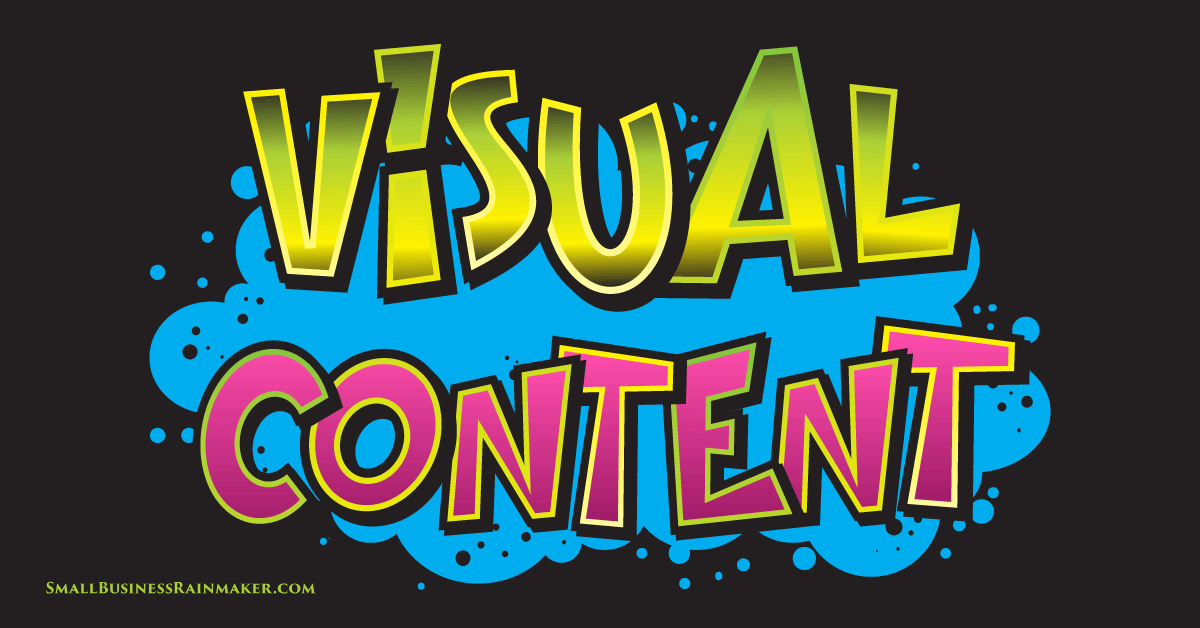
As I’m writing this article, we’re in the midst of the pandemic. Your business may have been hit hard and struggling to recover.
All the more reason to stay top-of-mind with existing customers and potential new customers with messaging that reminds them of, or introduces them to, who you are and what you have to offer.
Content marketing is a necessity for any business. That’s where you put into words the value of the products and services you provide, and communicate that value in your marketing, to help people determine whether to do business with you.
But going further and including visual content throughout will elevate the effectiveness of both your digital marketing and traditional marketing campaigns.
What Are Visual Marketing and Visual Content Marketing?
The definitions of visual marketing and visual content marketing, according to Small Business Rainmaker Founder Andre Palko:
"Visual marketing in the broadest sense is the use of anything that appeals to the eye, in support of selling a product, service, or experience. It includes the use of color and design in any media, whether in person, in print, online, or in the product itself.
Visual content marketing is the creation of educational or entertainment material that attracts a clearly defined target audience and appeals primarily to the sense of sight, with the ultimate intent of converting them to customers. Content helps the target audience solve issues that are related to the product or service."
Have you noticed how, when you're scanning information online or on paper, your eyes are immediately drawn to any images or other visuals embedded in that information?
Naturally, the same holds true for your customers and potential customers when they view any information related to your business.
Anything visual – an image, video, infographic, etc. – will capture their attention much quicker and with more impact than plain words or content.
Breaking up the bodies of text in your marketing content with compelling visuals makes people more likely to read the entire piece and come back for more.
20 Types of Visual Content
- Photos
- Images
- Charts and graphs – data-driven visuals/data visualizations
- Infographics
- Videos
- Color typography
- Animated gifs
- Gif-ographics – a combination of infographics with animated gifs incorporated
- Memes
- Quotes on a graphic
- Branded quotes – quotes on a graphic that include your logo and/or URL
- Flip-books (online magazines)
- Presentations (slide shares)
- Screenshots with annotations
- Calls-to-action
- Ads
- Interactive visuals such as 3D images, visual tours
- Quizzes or puzzles
- Cartoons or comics
- Checklists or cheat sheets
Why Is Visual Content Marketing So Important?
According to marketing guru Neil Patel,
"When you consider that 65% of people are visual learners, 90% of information that comes to the brain is visual, and presentations with visual aides are 43% more persuasive, it makes sense to use content types which people have an innate psychological resonance with."
For instance, he describes the value of video:
"Videos are incredibly useful for presenting common problems and then showing the solutions that your product can offer. While there are much cheaper types of visual content available, a great video serves as extra clout for your campaign by demonstrating that you’re prepared to go the extra mile for quality. One study showed that including a video on a landing page increased conversions by 86%."
Here are some visual marketing statistics from a HubSpot study of more than 3,400 marketers across the globe:
- 70% of companies invest in content marketing, which could include visual marketing strategies.
- The primary form of media used in content marketing is video.
- One fourth of marketers are investing in content marketing related to product promotions while just over 20% are investing in branded storytelling specifically.
A 2019 Venngage study of content marketers revealed that visual marketing is increasing in importance every year:
- 49% said visual content was "very important" to their marketing strategy.
- Their visual content usage increased by 10% from 2018 to 2019.
- They used stock photos most frequently, over other types of visuals.
- They spent 31% of their budgets on visuals in 2019.
- 40% of them predicted that between 51% and 80% will rely heavily on visuals as part of their 2020 and 2021 marketing strategies.
Content Writer Jen Smith describes how visual content can help lower bounce rates, increase dwell times, encourage higher-SEO rankings and improve conversions. She walks us through what happens when someone reads a blog post that includes visuals:
"When a visitor hits your page, you have just seconds to catch their attention. The first thing they do is scan the page to see whether your post is something they should commit to reading.
Relevant images quickly showcase to the reader what your article is about. This, in turn, can pique visitor interest and help lower your bounce rate by keeping them on your site longer.
Furthermore, a second benefit is offered by using relevant images. With image titles and ALT tags properly filled out, images will boost your SEO. When search engines detect images that match the content of a post, they’ll be more likely to increase your article rankings for being a quality, relevant result."
The Power of Visual Content Marketing vs. Other Content Marketing
Content Writer Aby Nicole League notes that these days visual elements dominate social media channels and:
"All-text-without-visuals is a thing of the past—visuals reign in content marketing nowadays. For your campaigns to stay relevant to the times and your audience’s ever-changing needs, beef them up with the right mix of text and visuals.
Why do people prefer to engage with visual content? With just an image that resonates with your audience, you can elicit joy, sadness, shock, fear, or anger. That’s how powerful visual storytelling is."
She goes on to compare visual to other forms of content marketing (including audio):
Visual content gets your message across faster.
The human brain processes visuals in its visual cortex, a less busy and faster part that’s separate from the busier section that processes words.
Visuals are easier to remember.
When people read text-based information, only 10% to 20% of it is retained. Add a picture to written information, and people will recall 65% of it.
Creating visuals is harder than content writing, but not as hard as you think it is.
It takes a specialized skill set to produce a stunning infographic or educational video. But even if you’re not a designer, you can still create great visuals.
However, you can take advantage of done-for-you content creation, without having to learn new skills or spend valuable time in creating the content.
One example is the personal branding videos from CareerBrandVideos™. They created a system in which you simply answer several questions about your expertise. Then they deliver three professionally produced videos that highlight your expertise, personality, and authority in a way that text-based content can't match.
And because their video creation process is systematized, they can create your content at a fraction the cost of hiring a video production company or agency.
Visuals are suitable for different business-customer relationships.
Whether to use more text or more visuals depends on whether you’re marketing to consumers or to other businesses. B2C marketers prefer visual content over textual content. B2B marketers use text-based content more than their B2C counterparts do.
Along with Aby’s points above, I’ll add something else about the importance of visuals:
Because visual content marketing has become pervasive among businesses, you need to embrace using visuals in your marketing efforts, just to keep pace with your competition.
What Is a Visual Marketing Strategy?
In Killer Visual Strategies' Guide to Visual Marketing Lucy Todd advises:
"Audiences want information that’s catered to them. They want it to be quick to the point, dynamic and exciting to watch, and shareable. They want messaging that feels created especially for them. And they want content that appears in multiple mediums. To stand up to these demands, your content marketing strategy must incorporate multifaceted visual approaches.
Audiences have been seeing through one-size-fits-all marketing for years. Their scrutiny only gets more intense. They want your brand to put the same amount of time and energy into connecting with them as you want them to invest in becoming your customer.
And the best way to show them you care is to master the kind of marketing that drives that connection."
She lays out 5 principles and techniques to help you develop your visual marketing strategy:
1 - Let audiences dictate the trends.
Determine what the audience wants and describe how your service or product fits into that vision. "What does this brand do for me?" "Why is it better than alternatives?"
2 - Keep it short and sweet, and prolific.
People's attention spans are shorter than ever. Break up dense content into easy-to-scan pieces. For instance, a short-form (less than 2 minutes) video series works well.
3 - Explore elegant design with a minimalist approach.
Sleek and elegant design (the minimalist approach) is actually harder to produce than other types of design. But it's in high demand these days, so it should be considered.
4 - Try a cinematic approach.
Cinematic videos take inspiration from films. Whether live-action, animated, or a mix of the two, they consider point of view, camera angles and tracking (whether real, or implied in the case of animation), and narrative progression to generate a connection with the viewer or an emotional response.
5 - Create visual languages and workbenches for unique campaigns.
Explore alternate or additional colors, fonts, and illustration styles for a particular campaign. Relying too much on just one central brand can prevent you from hitting the exact goals of your specific campaign, and then communicating effectively with that particular audience.
How to Make Visual Content Marketing Work for Your Business
Now let’s take a look at some specific aspects of visual content marketing.
Stand Out with Visual Content on Facebook
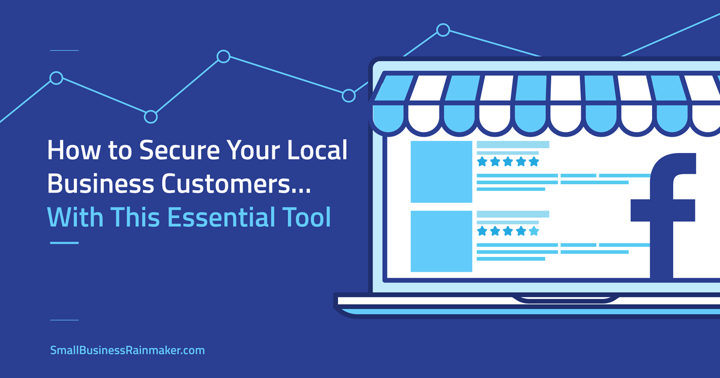
One of the best ways to market your business in both bad times and good times is probably already in your hands...your Facebook business page. You can make it start working for you right away.
Along with describing the many ways a Facebook page is important for local and small businesses, Andre Palko explains how visual content on Facebook will make you stand out:
"Visual content campaigns that post every day to your page are proven to:
- Make you stand out in local search,
- Get you more online referrals,
- Get more engagement and repeat sales from current customers, and
- Get more customers in the door.
According to Facebook, visual content, including graphics and videos, outperforms plain text in engagement. People do not ignore visual content. A great visual piece stops them from scrolling through their feed. It captures attention.
The simple formula for an "active" Facebook business page is this: post visual content two or more times a day to your Facebook page, seven days a week."
He recommends DFY (Done-for-You) visual content, like Local Social Link™ for anyone short on time, skills, or money.
Build Engagement on Twitter with Visual Content
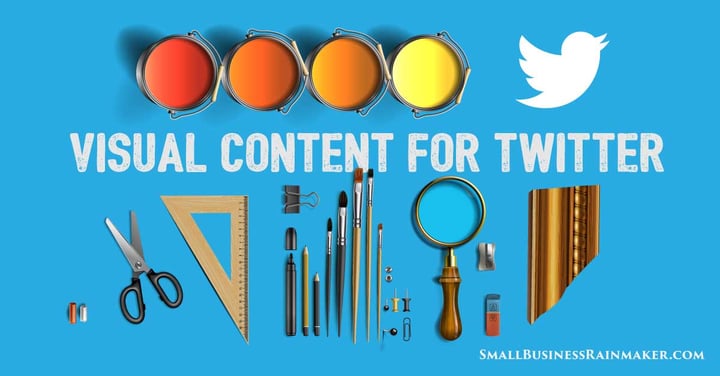
Marketing Analyst and Blogger Prince Kapoor offers six engagement-building tips to use visual content on Twitter:
- Create attention-grabbing visual posts
- Use a logo or website address on your images
- Use shareable images
- Use both images and texts to create visual content that is appealing and informative
- Be creative with your visual content
- Make good use of infographics
Optimize Your Website Landing Pages with Visual Content
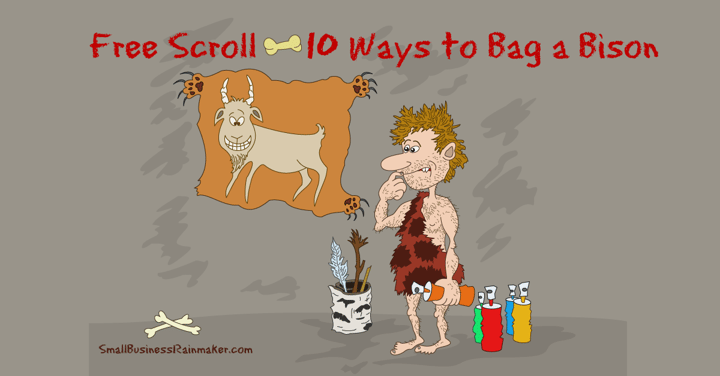
Landing (or sales) pages are meant to capture and hold readers' attention, so they'll read through to the end and feel compelled to take action.
Many of the types of visuals I listed towards the beginning of this article will work well on landing pages to boost marketing results. But your landing pages should be well-designed and optimized for a superior user experience.
Content Marketing Specialist Isabell Gaylord provided 10 components of the best landing page designs:
1) Informative above-the-fold section
2) The right number of things to click, for the best attention ratio
3) Smooth flow and direction
4) Contrast to make elements pop
5) Highlighting to prioritize certain elements over others
6) Plenty of white space for ease in reading
7) Attention to proximity with page items
8) Proper grouping of elements that communicate similar messaging
9) Social proof that makes your brand credible
10) Catchy headlines to command attention all the way down the web page
How to Use Strategic Design to Reach Your Audience
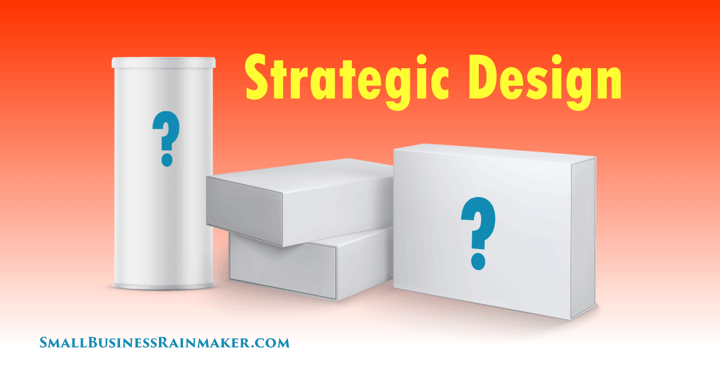
Even the very best product or service idea doesn't stand a chance without the right visual marketing and design.
Product and Branding Design Expert Kirk Grathwol laid out six tips to use strategic design to reach your ideal customer:
1 - Identify your primary audience and continuously tap into your knowledge of them.
2 - Determine the end result of your design by treating your entire product design process as a segment of your marketing efforts.
3 - Establish clear hierarchy so that your message reaches the right people and is delivered in the right way.
4 - Use color to your advantage, in the color of your product itself, your product packaging, and branding throughout your company.
5 - Utilize compelling typography to convey the right message that fits your brand and style.
6 - Include captivating images to imply feelings or actions that might otherwise be too complex to articulate through text.
Website Design Approaches for Effective Global Marketing
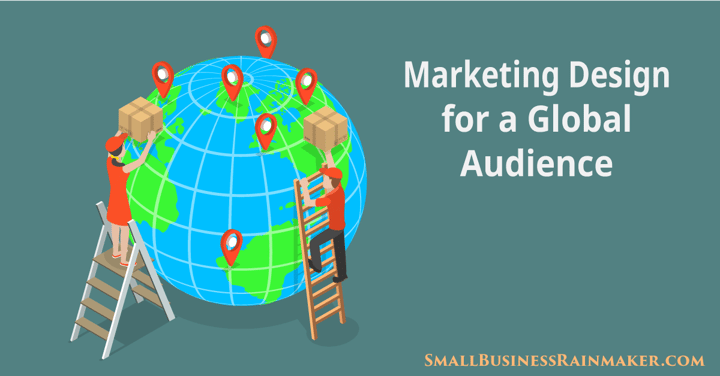
Even small, home-based businesses can sell their products and services to a global customer base, but this comes with a particular set of challenges. Your website needs to be designed to deal with the different expectations of people from different countries.
Content Writer Adity Sharma noted six tips to design your website for global marketing reach:
1 - Understand your reach.
You might have a product or service that will be especially appealing to audiences in Asia, but not so much to audiences in Europe. Add design flourishes that are suitable for your primary audiences.
2 - Stick with minimal design.
Minimal design is clean, clutter-free, and focused. There are no distractions or confusing elements that might be clear to you, but baffle people from other regions. Minimalism is ideal for global websites.
3 - Choose responsive design.
Responsive design ensures the site looks great and performs well regardless of the type of device it is viewed on. And it improves the overall mobile performance, which is great for search engine optimization.
4 - Make it easy to translate.
Just translating is the first step in the process. If you have limited resources, you can leave it at that. But if you have some room in the budget, customize each page to suit the language and regional preferences.
5 - Choose colors carefully.
Many colors can have a negative connotation in other countries, so it is a good idea to stick with something neutral, especially if you have a global presence with no single dominant market.
6 - Personalize images, but keep it neutral.
Don't use regular stock photos with stock models. Show global representation in skin color, features, hair, and general presence.
The Art of Data Visualization
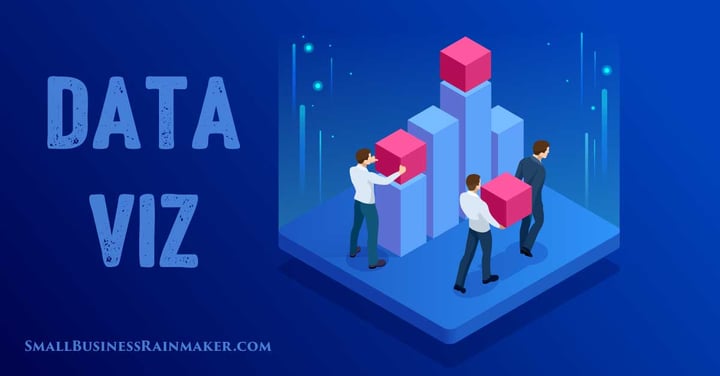
Data is created at an alarming rate every day. Businesses use the massive amounts of data they collect in various ways:
- To uncover opportunities to improve and optimize processes.
- To help employees work "smarter, not harder."
- To communicate certain information to their target audience.
Data, by itself, can be meaningless and hard to comprehend. Data visualization helps you communicate the idea behind the data in a compelling way.
Payman Taei, Founder of Visme, a visual content creation platform, offered an example of data visualization:
"Let's say you just conducted an internal study about all of the charitable contributions that your organization made over the last year. Obviously, you'd want to find a way to let your target audience know about this - it's the perfect way to not only raise brand awareness but to also confirm that your values align with theirs.
But simply including a bulleted list of that data isn't going to get the job done.
Instead, you might use a graph maker to create a pie graph of the total amount of money you donated in a year. Then, each sliver of the pie could represent another organization that you and your employees gave money to or otherwise helped out in some way.
Or, you might use a timeline maker to express the same ideas in a totally different way. Instead of money being the thing that you're honing in on, allow it to be time. Visualize the fact that your organization gave money to charitable organizations all year long, not just at the end of the year to collect that sizable tax credit, like most businesses do. Show people that you were out there doing your part to help make our communities better even when people weren't watching."
Take Advantage of Google Data Studio
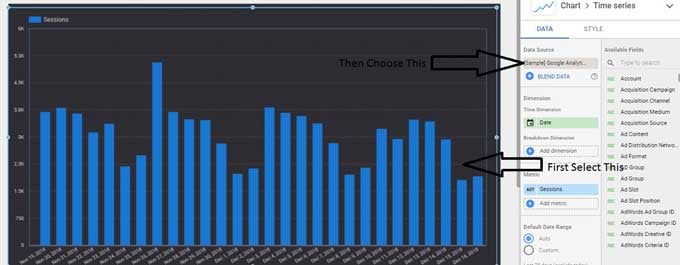
Along with design platforms like Visme, you can use Google Data Studio for your business data visualization.
A communication tool which collects data from different sources and visualizes it on the single screen, the primary function of Data Studio is to visualize the data, not modify it.
Marketing Strategist Bella Jones provides a tutorial on Google Data Studio and offers five benefits of using it:
1 - It’s Free
It is one of the best open source data visualizing tools providing users all the features without charging a single penny.
2 - Report Customization
While using Data Studio you will interact with a blank canvas. Use it to create a single page or multi-page reports. You can even customize the size of columns just by dragging and dropping. The formatting option empowers you to customize your report as per your branding and color needs.
3 - Merge Data
One of the best features of Google Data Studio is the ability to merge data from 90 different sources. While customizing the reports, you can choose as many data resources as you need. You’ll merge data from entirely different sources on one dashboard without facing any error.
4 - Widget Lover
If you love to use widgets then you’ll love working with Data Studio. In Data Studio you can add widgets for as many charts and tables as you want.
5 - No API Restriction
In Google Analytics you can use as much as seven dimensions at once, but in Data Studio there are no limits. When you connect your Google Analytics account, it will access all the data in a single shot.
Have You Thought of Using Office Wall Murals?
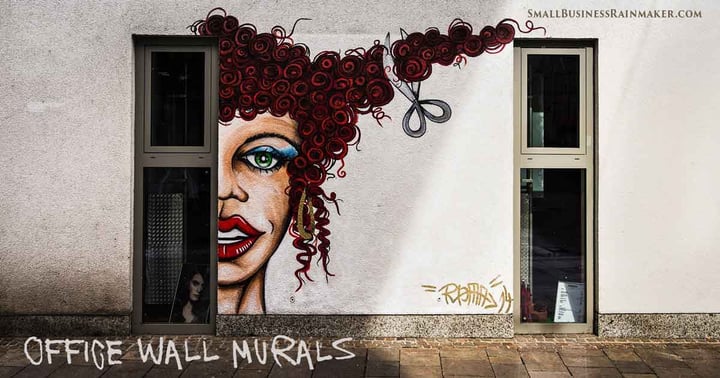
An innovative way to make good use of otherwise blank wall space, office wall murals have become the rage in corporate design.
Endless versatility and extreme efficiency make wall murals an enduring form of office decoration.
Andre Palko offers six convincing arguments for including a wall mural in your office design:
1) They maximize space.
2) They instantly liven up a room.
3) They tell your brand story.
4) They contribute to employee productivity.
5) They are low-maintenance and versatile.
6) They can be anything you want them to be.
Conclusion
Statistics prove that the right visual content can be a significant driver of growth for a small business in any niche or industry. The role of visual marketing is undisputed and growing in importance.
Visual content improves results in many areas:
- Lead generation and engagement on Twitter, Facebook, LinkedIn, and other social media channels
- In website design including blogs and landing pages
- In understanding and making productive use of mountains of data
- In improving morale by elevating office decor
Those companies that find a way to incorporate visual marketing into their overall marketing strategy stand to gain a significant advantage over their competitors.










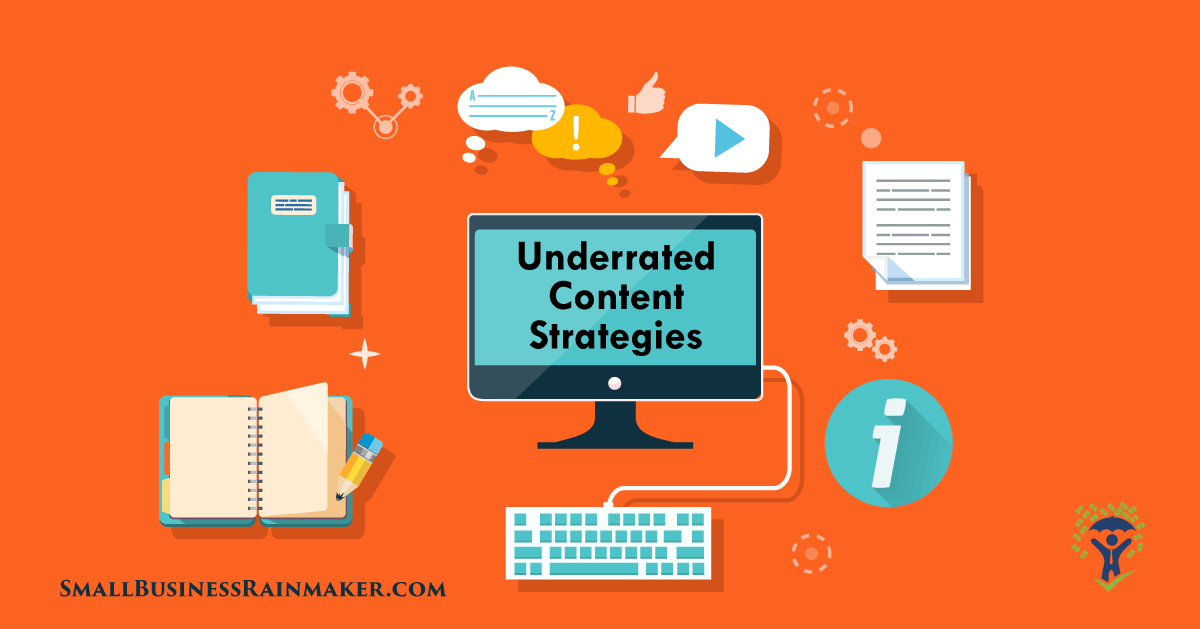

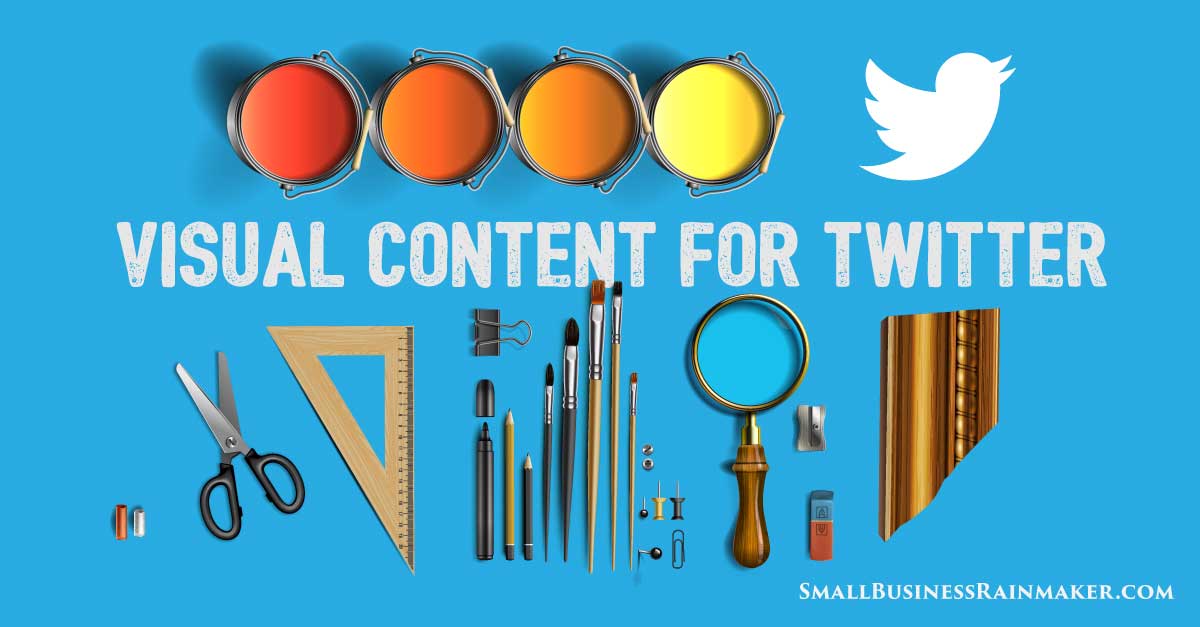

Leave a comment